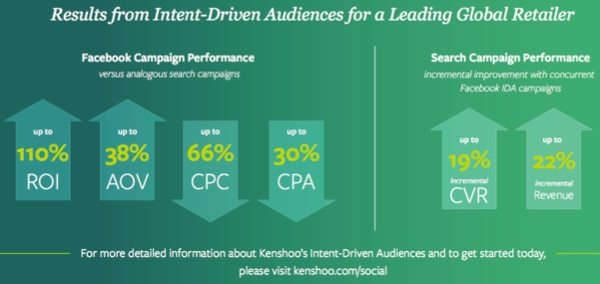Audience targeting is not new. Marketers know the value of delivering the right message to the right person; however, the increasing complexity of the buying cycle makes it challenging to execute. The touch points along the path-to-purchase have grown into a web of influences and interactions, which marketers must interpret and analyze in order to properly optimize their programs. Connecting the dots to find desirable audiences across channels and devices has proved to be an intricate process.
Social advertising has opened up a whole new world of targeting options to reach potential customers. Granular profile data has provided insight into the likes and interests of audience segments. But, what if we could move beyond likes and interests and begin to target individuals based on action and intent?

We’ve seen the possibilities through the Facebook Exchange (FBX). For example, a consumer might visit a specific product page of a retailer and put the product in his cart but then not complete a purchase. FBX enables advertisers to display a product specific message in real time to encourage the consumer to come back to the advertiser website to complete the purchase.
Retargeting, such as the above FBX example, is a powerful tactic, and it becomes even more sophisticated by layering on additional consumer information. Channel data should not be viewed in silos, and at Skai, we believe there is tremendous value at the intersection of search + social. As such, we have enabled advertisers to leverage their search and shopping campaign performance data (such as CPC, CVR, and ROI) through FBX to bid more effectively and find the true value of the customer.
Moving beyond FBX, Skai’s support for Google Remarketing Lists for Search Ads (RLSA) enables marketers to automatically optimize search bids when retargeting cohorts of consumers based on actions taken on the marketer’s website. In addition, Skai has also integrated with several leading Data Management Platforms (DMPs), so advertisers can leverage search campaign structures and keyword performance to create and segment audiences from data managed by the DMP, allowing for extended targeting across other marketing channels, such as display and email.
By harnessing cross-channel synergies, marketers are able to more intelligently identify and manage audiences, efficiently reaching those who are most likely to convert. The concept of audience management is principally about the shift from simply targeting search keywords or social interests to targeting people across channels, based on demonstrated intent.
This is why Skai developed Intent-Driven Audiences (IDA). Announced today, IDA is a is a turn-key solution that automatically creates and updates Facebook Custom Audiences based on the intent people demonstrate through their search engine activity. This means advertisers can now target people on Facebook who are known to be currently “in-market” for specific products, brands and services, and use the information collected via search activity to target or exclude users on Facebook campaigns.
Marketers can leverage Skai IDA in conjunction with existing targeting tactics such as Facebook Custom Audiences and Lookalikes. For example, with IDA, marketers can easily create Custom Audiences of consumers who click on their paid search campaigns, automatically aggregating the users into Custom Audiences based on the campaign structure and the keywords of the ads that were clicked on. And then these audiences can be expanded with Lookalikes to achieve more reach, scale, and customers.
For advertisers and brands, IDA represents new, and exciting, territory –finding innovative ways to reach new audiences and build out more integrated, cross-channel strategies.
To learn more about Skaio Intent-Driven Campaigns, click here.
